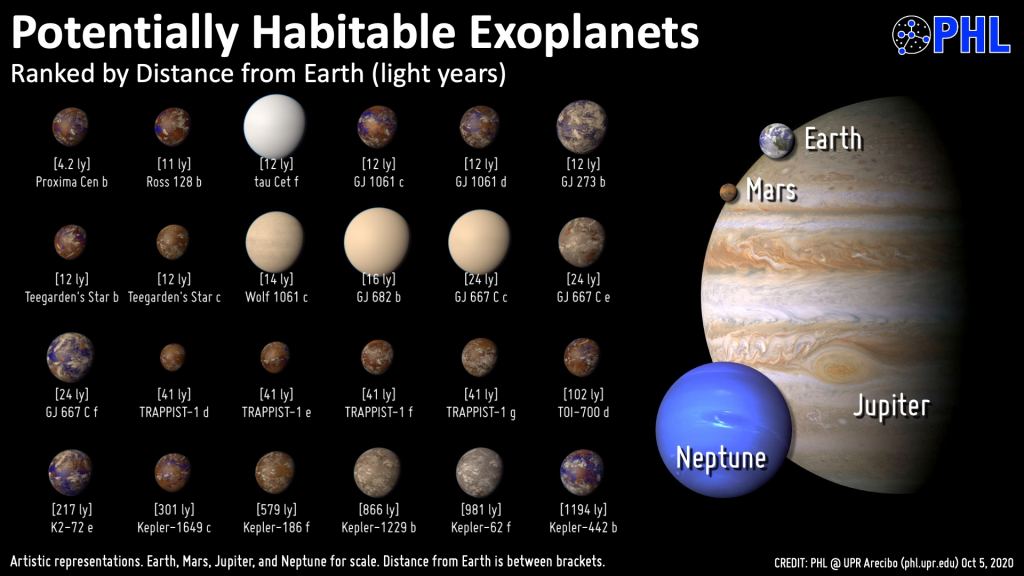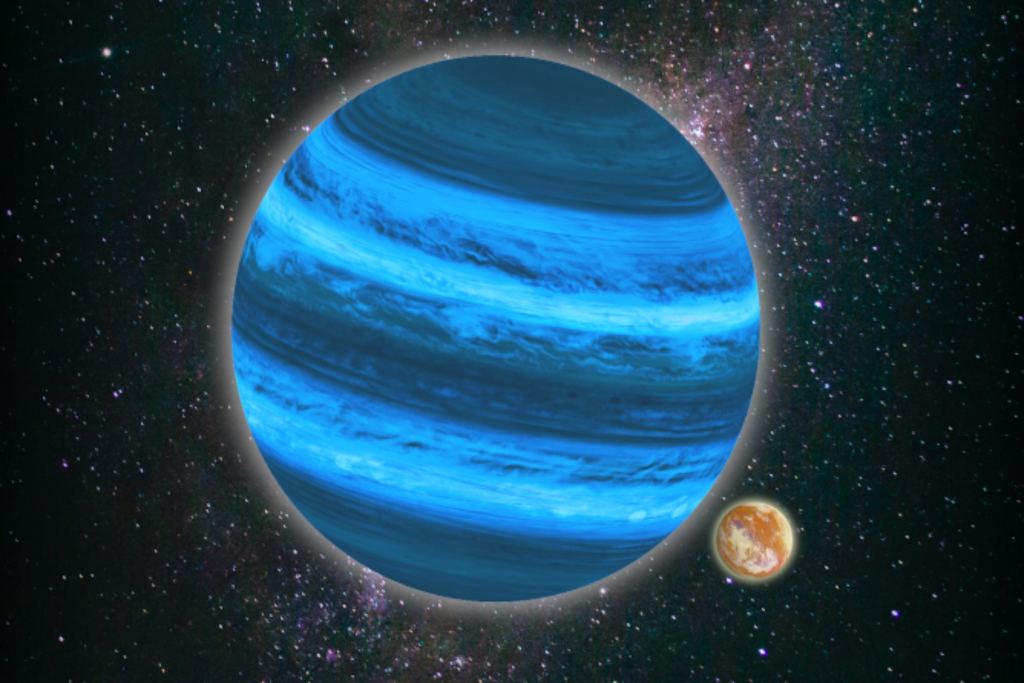The search for life on exoplanets takes a fairly conservative approach. It focuses on life that is similar to that of Earth. Sure, it’s quite possible that life comes in many exotic forms, and scientists have speculated about all the strange forms life might take, but the simple fact is that Earth life is the only form we currently understand. So most research focuses on life forms that, like us, are carbon based with a biology that relies on liquid water. But even with that narrow view, life could still be hiding in places we don’t expect.
Since terrestrial life depends on liquid water, the search for life on exoplanets focuses on those within the circumstellar habitable zone (CHZ) surrounding stars. That is, not to close nor too distant, so that liquid water could exist on a rocky planet. For our solar system that’s roughly between the orbits of Venus and Mars. Most of the exoplanets meeting that criteria are super-Earths that closely orbit small red dwarf stars, since red dwarfs make up about 75% of the stars in our galaxy, and super-Earths are the most common terrestrial exoplanet.
One of the surprising discoveries about exoplanets is that Jupiter-sized planets often orbit close to their stars. These “hot-Jupiters” aren’t likely to have life, but they could have moons that are as warm and wet as Earth.

And it turns out that large gas planets don’t even have to orbit close to their star to have moons with liquid water. We know, for example that the Jovian moon of Ganymede has a water ocean beneath its icy surface. Europa is known to have more water than Earth, and even Saturn’s small moon Enceledus has liquid water. What’s interesting about these examples is that the presence liquid water on these moons is due not to the heat of the Sun, but rather to thermal heating due to the gravitational tug of their planet. Of course, this raises an interesting question. If moons of Jupiter and Saturn can have liquid water, what about the moons of Jupiter-like exoplanets that don’t even orbit a star?

That is the question examined in a recent article in the International Journal of Astrobiology. What’s interesting about this study is that it’s not simply asking whether an exomoon could stay geologically active enough to have liquid water. The answer to that is clearly yes. Instead, this work looks at how potentially habitable exomoons might form, and whether they could maintain enough liquid water long enough for primoridal life to evolve. For example, for moons within a stellar system, a primary driver for the chemical evolution of the moon would be the light and heat of the star. But for moons of rogue planets, a primary influence would be cosmic rays. This, combined with tidal heating would drive the evolution of a moon’s atmosphere over time.
To see the effects of these differences, the team models an Earth-mass moon orbiting a Jupiter-mass rogue planet. They found that with some reasonable assumptions about chemical composition and orbital stability, a rogue exomoon could maintain liquid water on its surface. Much less than that of Earth, but plenty enough to allow for life to arise and evolve in a reasonable timescale.
It’s important to not that this model focused on exomoons with a rich atmosphere. If these habitable exomoons exist, we might be able to study their atmospheres through infrared and radio astronomy. So the first planet to show evidence of extraterrestrial life might be a rogue one.
Reference: Patricio Javier Ávila, et al. “Presence of water on exomoons orbiting free-floating planets: a case study.” International Journal of Astrobiology FirstView (2021): 1-12.

